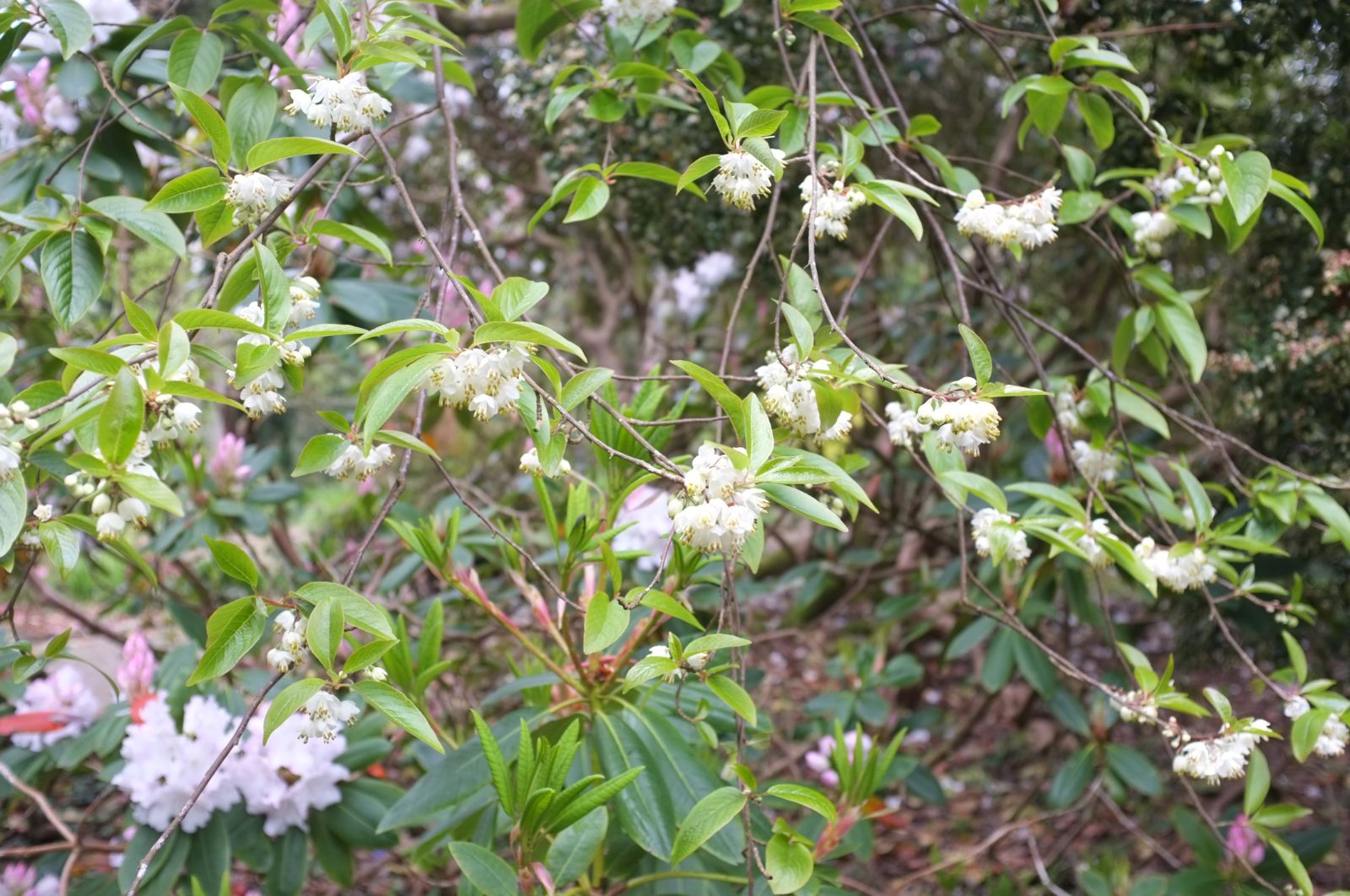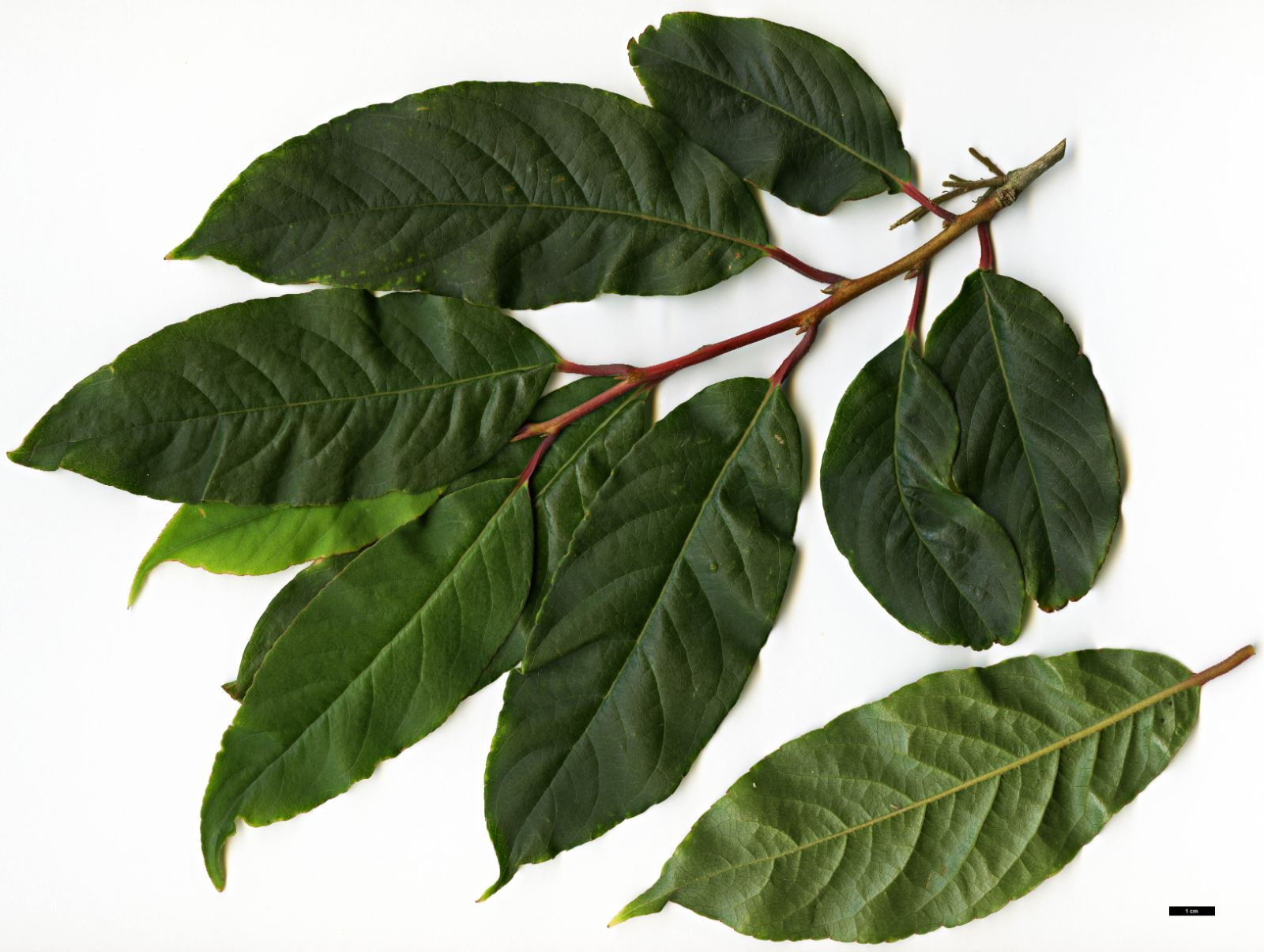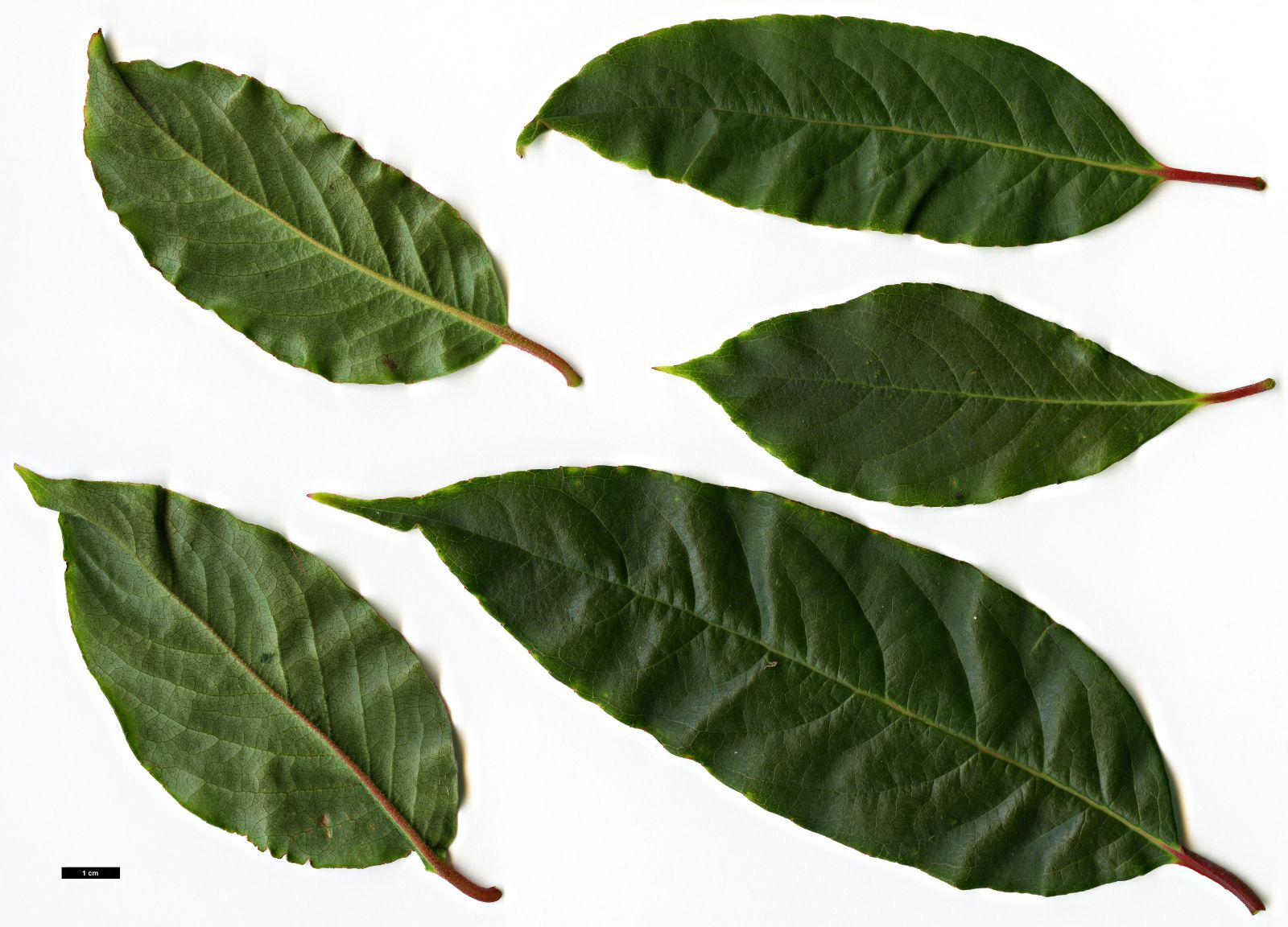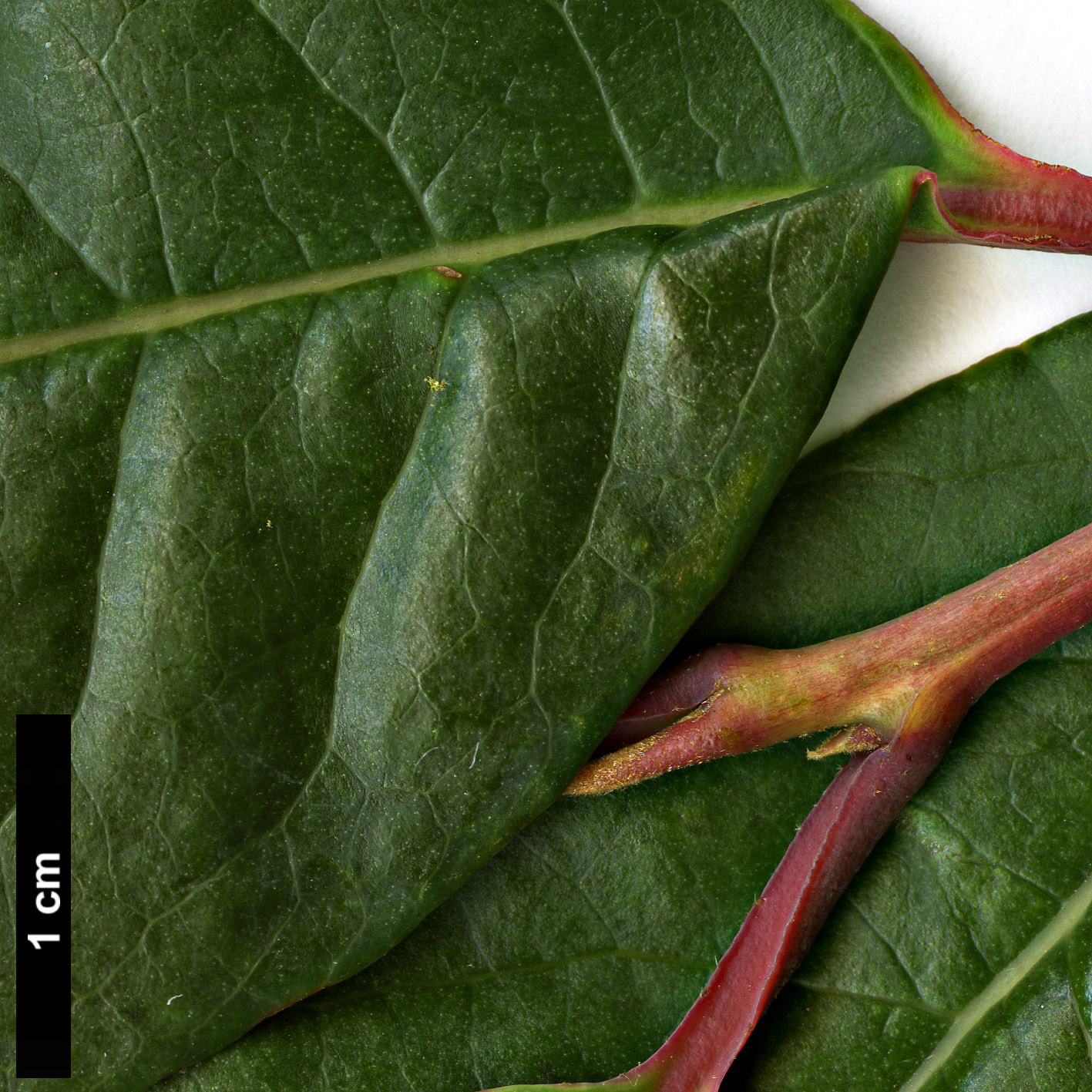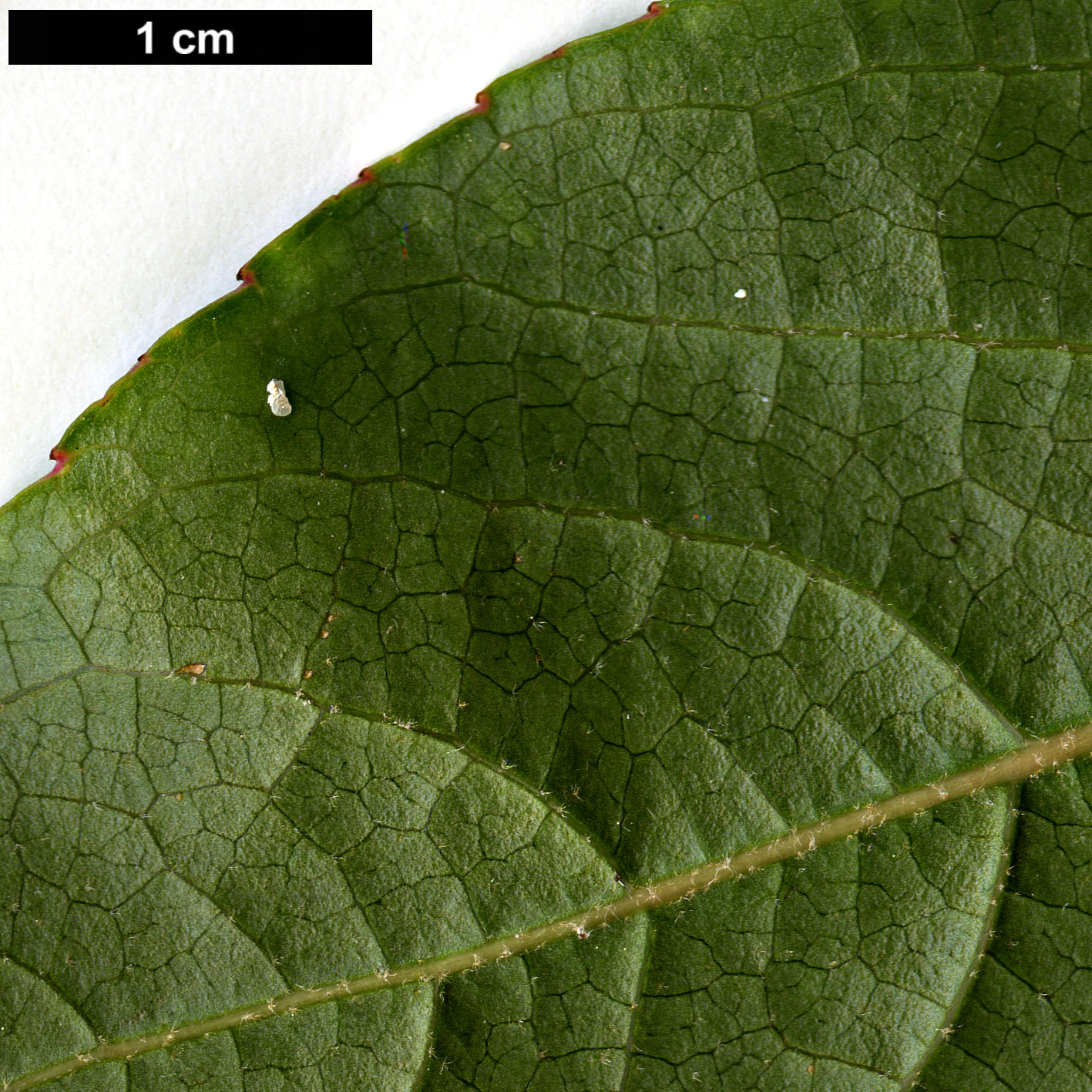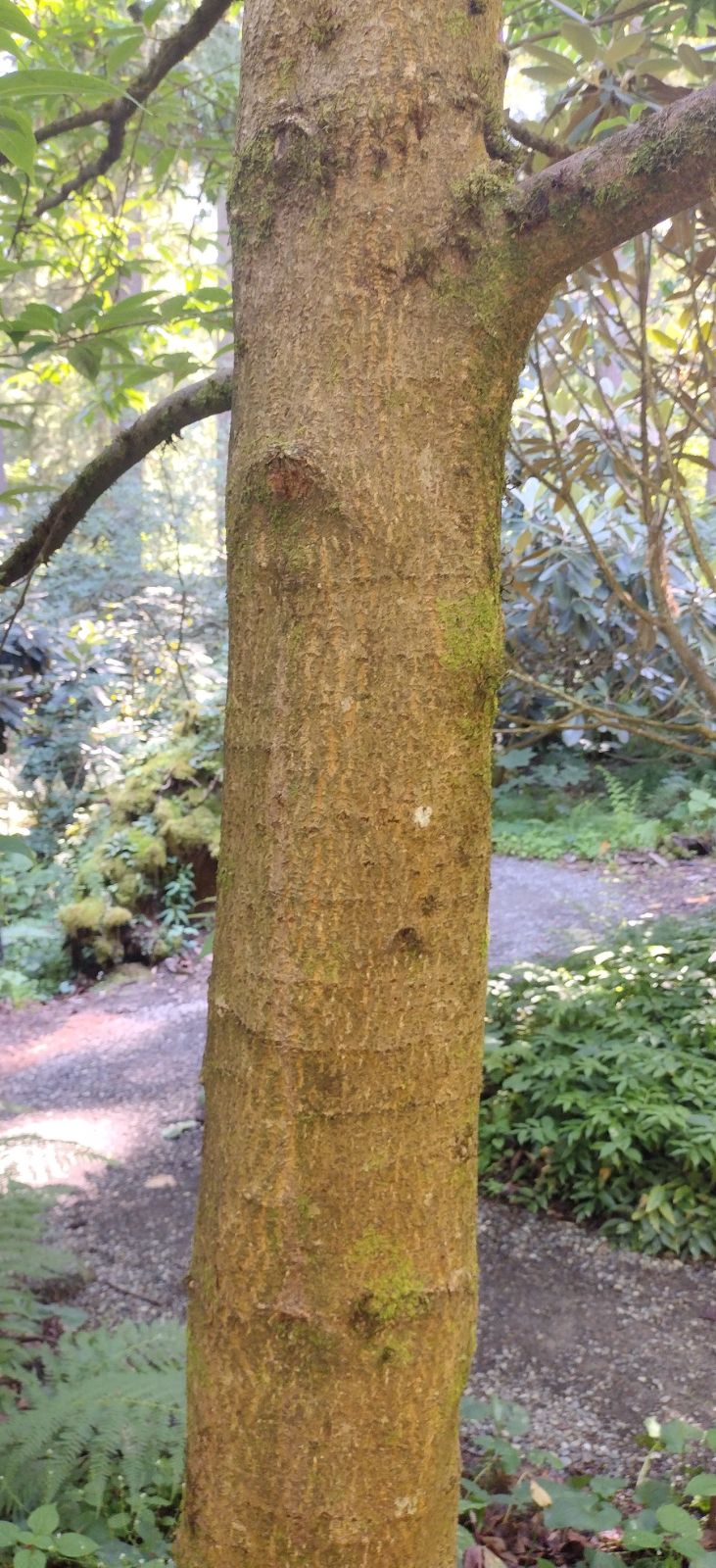Rehderodendron macrocarpum
Sponsor
Kindly sponsored by
Arabella Lennox-Boyd
Credits
Alan Elliott (2018)
Recommended citation
Elliott, A. (2018), 'Rehderodendron macrocarpum' from the website Trees and Shrubs Online (treesandshrubsonline.
Genus
Synonyms
- Rehderodendron maplenense Hu
Trees 7–10 m tall. Bark dark grey. Branchlets with purple stellate pubescence. Leaves 7–15 × 3.5–5.5 cm, oblong-ovate, elliptic, or oblong-elliptic, underside of leaf glabrous, veins sparsely pubescent, upper surface with very few hairs. 7–13 pairs secondary veins on each side of midrib, margin sparsely serrate, short acuminate or acute; petiole 1–1.5 cm, red. Inflorescences a cymose raceme or panicle, 4–5 cm long, 6–8-flowered. Calyx densely stellate-pubescent, corolla lobes elliptic to obovate, 1.5–1.8 × 0.5–0.8 cm long. Fruit, dry drupe, green becoming red on exposed side, cylindrical to cylindrical-ovoid, slightly curved, 5–7cm × 2.5–3.5 cm, 8–10-ribbed, smooth between ribs, glabrous. (Hwang & Grimes 1996).
Distribution China Guangxi, Sichuan, Yunnan. Vietnam Northern
Habitat Dense forests. 1000–1500 m asl.
USDA Hardiness Zone 8a-8b
RHS Hardiness Rating H4
Conservation status Near threatened (NT)
In its native range this species can form the dominant component of the broadleaved semi-deciduous forests it inhabits. However since the 1998 IUCN assessment, the species is believed to have become increasingly threatened because of extensive logging and habitat clearance, with the timber being used locally in China and Vietnam.
This species has been in cultivation in the UK and North America since the original Chinese introduction distributed by the Arnold Arboretum in 1934, but there have also been sporadic reintroductions from China by private collectors in recent years. The lemon-scented flowers and red tint to the foliage in autumn make this another member of the Styracaceae worthy of being more widely grown wherever suitable conditions permit.
A 2014 introduction under the joint Hanoi, UBC, Longwood and RBGs Edinburgh and Kew Expedition to Vietnam (HNE) is in cultivation at Logan Botanic Garden in southwest Scotland and at Kew. The plants at Logan are currently being being cultivated in a polytunnel and are behaving as evergreens with the added protection they receive, a trait confirmed by Robbie Miles-Blackhall (pers. comm. 2018), who has experience with this genus in North Wales. He went on to say that the plants would likely lose their leaves in winter once planted out in the garden.
The University of British Columbia Botanical Garden successfully cultivates this species in USDA zone 8 conditions, suggesting that given the right protection and shelter the species can tolerate winter temperatures at low as –12°C.
Original 1934 plants at Trewithen measured c. 10 m tall in 1971 and were measured at 13 m and 15 m in 2014 when last checked for the UK Tree Register (Tree Register 2018). Another tree from the 1934 introduction was succesfully cultivated by Oliver Wyatt at Maidwell Hall, Northamptonshire (Bean 1976) but it it is not known if this tree still survives.

